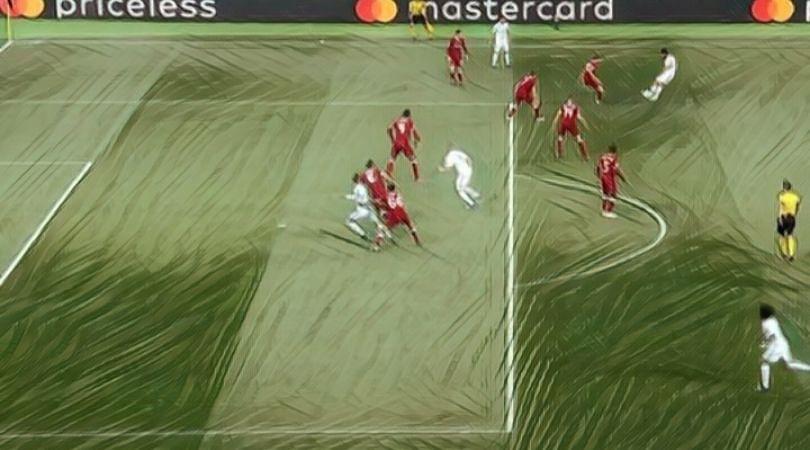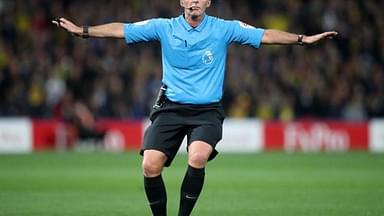Offside Rule: History behind football’s most traduced law, why was it introduced and how it has transformed over the years.
The offside rule is a bit complex rule to understand at first but it has been a part of the game for more than 150 years and is one of the most essential parts of the game.
It irks the team which loses a goal because of it and wouldn’t be wrong to say that it is a nemesis to the players who are deployed at the goal-scoring positions.
On the other hand, teams who love to play their defence on high-line like Barcelona, Manchester City and Liverpool often love the concept of offside. For, Barcelona, it has been an essential part of their playing style, as it allowed players with less physical prowess and high technical abilities to conquer over physically dominant sides.
Anyway, the offside rule has constantly transformed the game throughout its history and many times have changed the fate of the clubs and national teams in seconds. Therefore, the Sportsrush will give a brief history of the rule.
It was first included in the rules when a group of Cambridge students led by HC Malden met in his Trinity College rooms, Cambridge, to write out a set of laws to govern the game.
There is no available date for this meeting as an original rules document didn’t survive, however rules from that era are available, such as the 1856 rules in Shrewsbury school Library.
Why was the law introduced?
In the years before to the offside, the issue of forwards stranding near the goal to pounce on the right time to score a goal was seen as a problem. In order to prevent this unglamorous aspect of the game offside law was introduced.
The rule further gave scope of more tactical innovations which later developed the game and bring in a balance between the forwards and defenders in the game.
Early years of the offside rule
The first laws of the game drawn up by the Football Association in 1863 stipulated that a player was offside if he was in front of the ball: “When a player has kicked the ball, anyone of the same side who is nearer to the opponent’s goal-line is out of play, and may not touch the ball himself, nor in any way whatever prevent any other player from doing so until he is in play…”
That effectively went against the idea of passing and during that time football in England was all about head-down charging, which is why England was so startled when they encountered the passing approach of Scotland, who had had no such law, in the first international in 1872.
In 1866, the laws were slightly relaxed as they determined a player to be onside if there were three defensive players between him and the goal (or was behind the ball, which has remained a constant).
The rules once again changed in 1873 and offside was judged when the ball was played, rather than when the player received the ball. Since then the law has constantly changed to liberalize it.
n 1903, the notion of interfering with the play was introduced: “It is not a breach of Law for a player simply to be in an off-side position, but only when in that position, he causes the play to be affected.”
Four years later, a big change happened when a player could only be declared offside in opposition’s half. By then all the teams were used to the rules of offside and were using it in their gameplay.
However, it brought the number of goals drastically down and made the game ‘boring’ for the fans. Newcastle drew 0-0 at Bury in February 1925, it came as the final straw.
It was Newcastle’s sixth goalless draw of a season that produced what at the time was an unthinkably low average of 2.58 goals per game. After which attendances in the stadium start falling, hence the FA realized that they had to make a change.
The 1925 change
The English FA came with two alternatives, either to require only two defending players (including the goalkeeper) to be in advance of the forward for him to be onside, or to add a line in each half 40 yards from the goal behind which a forward could not be offside.
In the end, the association decided to go with the former and was introduced in the 1925-26 season. A sharp rise in the average number of goals was seen as it was accounted to be 3.69 goals per game.
Although it compelled the teams to make radical tactical changes since the earlier offside traps became ineffective as in that a full-back was able to give cover to his partner, who stepped up to try to catch the forward.
In the new rule, it made teams more prone to the one on one situation. Therefore, teams then withdrew centre-halves in the 2-3-5 to man-mark the centre-forward (which is why central defenders in Britain are still referred to as centre-halves).
However, many branded as the death of football, including reputed journalist. Soon the rule change was ineffective and by 1960, teams developed new offside traps.
Moreover, the advent of zonal marking and improvements in nutrition and physical training led to the development of pressing. Rinus Michels’s Ajax pressed to manipulate the effected playing area to suit their game gave thrilling spectacles to the audience.
The 1990 and 2005 change
In 1990, the rules were once again transformed and described a player onside if he was level with the second-last defender was deemed to be onside, whereas previously he had had to be behind.
But in 2005 came the most radical change in the rule and made rational decisions to finally structure the 142 years old law back then. Firstly, it was clarified that a player is offside only if a part of his body with which he is legally able to play the ball is beyond the penultimate defender.
Since no linesman would precisely decide whether an upper arm or torso he can see protruding beyond the defender, thus academically it eased the burden on the linesman.
But unknowingly the new amendment gave a huge benefit to the striker in the name of the benefit of the doubt. More significant, though was the rewording of what it means to be interfering:
“Interfering with play means playing or touching the ball passed or touched by a team-mate.” A later amendment clarified that: “A player in an offside position may be penalised before playing or touching the ball if, in the opinion of the referee, no other team-mate in an onside position has the opportunity to play the ball.
“If an opponent becomes involved in the play and if, in the opinion of the referee, there is potential for physical contact, the player in the offside position shall be penalised for interfering with an opponent.”
For more Football news, click here.
With this, the rule has continued to be in the game and there have been slight changes in recent years too, but it could be understood that it has been drastically eased to increase the number of goals in the game, even though it is still regarded as a “hindrance” to a forward.






